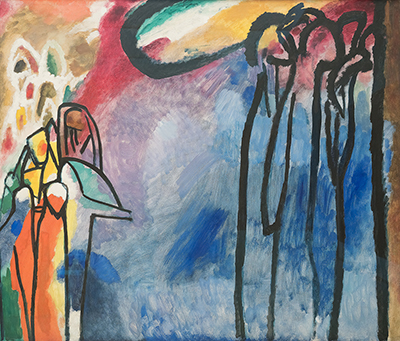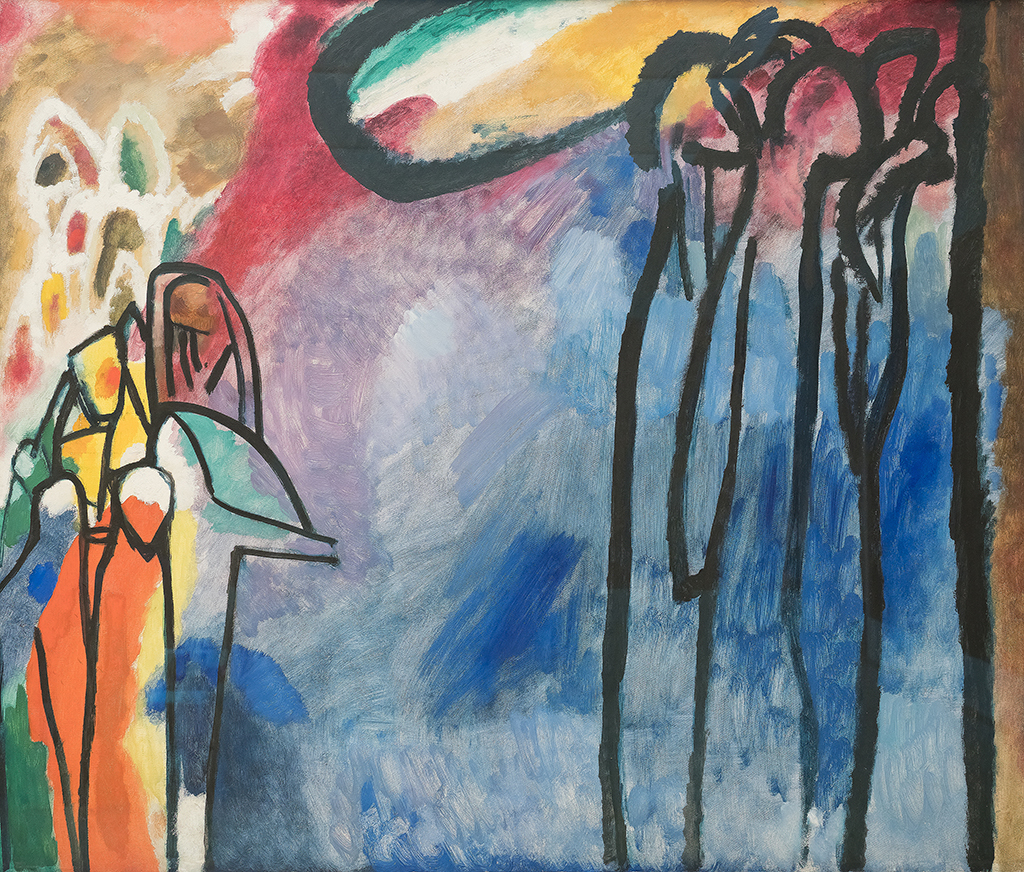Kandinsky produced a large number of improvisation pieces in the early 20th century, with this painting dated at either 1910 or 1911. Our research suggests it as being found in the collection of either the Städtische Galerie im Lenbachhaus or the Neue Pinakothek, though both of are in the city of Munich, Germany.
We immediately spot two groups of figures, styled in a way commonly used by Kandinsky. He would concentrate on line only, with no solid form. These characters would therefore be added after the other bright tones of colour. In the far left we also find some white outlines that could possibly depict the outside of a building, perhaps even a small town. Those unfamiliar with Kandinsky would struggle to find anything identifiable here, but with our knowledge of his other Improvisations as well as the themes used in other paintings throughout his career we can start to understand his visual language. That said, there are still plenty of question marks remaining on this piece, which is also relatively less famous than some of his major artworks such as Composition IV, Composition VI and Composition VII. There may well be greater documentation around Improvisation 19 available in German that has yet to be translated, and hopefully that might change in the future because of the international nature of this artist's prominence.
This was an artist who could claim to have mastered colour, going to great lengths to understand the different methods of constructing a palette. Few outside of the art world are aware of the amount of theoretical studies that can be completed by artists, if they so desire. Some prefer to work without any of these considerations, but Kandinsky was a very thoughtful artist despite the relatively random, expressive nature of some of his work. It would therefore be easy to misunderstand his approach, for those who are unaware of his background and also the way in which his style developed over time. Thankfully, his own career, plus those related to it, are still held in a very high regard today and so knowledge of what he achieved has spread far and wide. Head to the German city of Munich to see this piece, alongside a number of other parts of the Improvisation series.
Munich offers some excellent items from this artist's career and you might spot some lesser known artworks, such as this one, that you had not come across before. The city also offers some more traditional artists as well from in and around this nation, such as Durer and Cranach. German art itself is exceptionally diverse, both leading and following at different periods of European art. In a slight change from other nations, the work of these great artists is fairly well distributed around the nation, rather than just having items on display in one or two major cities. This allows a better quality of provincial museums and galleries too, so most large towns in Germany should offer some of these great names.





